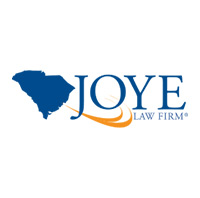
A spinal cord injury (SCI) often causes irreparable damage to the victim’s quality of life. An SCI interrupts the nervous system communication between the brain and spinal column, resulting in paralysis or loss of bodily function. If you have suffered an SCI, you may require lifelong rehabilitative care.
Read on to learn more about spinal cord injuries and whether they can heal. If you suffer a spinal cord injury in an accident due to someone else’s negligence, contact the attorneys at Joye Law Firm to learn your legal options for compensation.
How Common Are Spinal Cord Injuries?
According to the American Association of Neurological Surgeons (AANS), approximately 17,000 Americans each year suffer an SCI. The AANS names motor vehicle accidents as the leading cause of SCIs in people under 65, while falls are the leading cause for people over 65.
Types of Spinal Cord Injuries
SCIs fall into two subcategories: complete spinal cord injuries and incomplete spinal cord injuries.
A complete spinal cord injury results in a total loss of motor control and sensation below the injury location. An incomplete spinal cord injury lets the affected individual maintain a degree of motor function or sensation below the injury site.
SCIs are also characterized by location. These categorizations include:
Cervical Spinal Cord Injury
This region of the spinal cord is located above the shoulders. Cervical spinal cord injuries are the most severe and often result in loss of function. Individuals who suffer from cervical spinal cord injuries will typically require round-the-clock care to perform basic daily functions.
An injury to the C1 or C2-level spinal cord is often fatal, while injuries at the C3 or C4 level often result in quadriplegia or full paralysis. Individuals who suffer from a spinal cord injury between the C5 and C8 levels can sometimes restore their speaking, breathing, and movement functions to some extent, depending on the severity of the injury.
Typically, injuries to the C5 level are the most severe in this range of vertebrae, with the severity gradually decreasing as the injury moves lower in the spine. Cervical SCIs are most often caused by trauma from sports injuries, auto accidents, and falls.
Thoracic Spinal Cord Injury
The thoracic spine is the region that runs through the torso and chest. Injuries to T1 through T5 levels lead to impaired function of the abdominal muscles and the muscles involved in breathing.
Injuries to the T6 through T12 levels affect posture and balance. Thoracic injuries commonly result in paraplegia, though patients may maintain function in their arms and hands. Auto collisions and falls typically cause these SCIs.
Lumbar Spinal Cord Injury
The lumbar is the portion of the spine that influences the lower body. Injuries to the lumbar spine usually cause loss or deterioration of function in the legs, hips, and abdominal muscles, though affected individuals may maintain upper body functionality.
Injuries to the lumbar spinal cord may be caused by trauma, such as accidents or falls.
Sacral Spinal Cord Injury
Injuries to the sacral portion of the spinal cord, located at the base of the spine, affect the posterior lower-body muscles, hips, and pelvic organs. These SCIs are often due to surgical complications, vehicle accidents, and falls.
The severity of a spinal cord injury is graded on an American Spinal Injury Association (ASIA) scale. As the injury moves up the scale, the likelihood of recovery diminishes.
- ASIA A: Complete spinal cord injury; no sensory or motor function remains.
- ASIA B: Incomplete spinal cord injury; the patient has no motor function.
- ASIA C: Incomplete spinal cord injury; some motor function remains, but less than 50% of the affected muscle groups can lift against the force of gravity at a full range of motion.
- ASIA D: Incomplete spinal cord injury; more than half of the affected muscle groups can lift against the force of gravity at a full range of motion.
- ASIA E: Normal function remains.
The spinal cord is composed of highly specialized cells, and some of these cells are incapable of splitting and reproducing. This fact makes a full recovery from a severe SCI unlikely. While full recovery is rare, patients can sometimes regain partial function from treatment like long-term intensive physical therapy or surgery to reduce chronic pain symptoms.
Hiring a Lawyer After a Spinal Cord Injury
SCIs are unlikely to improve and often result in loss of function, severely impacting your quality of life and ability to work.
Hiring a South Carolina spinal cord injury lawyer with significant experience is vital if you have suffered from a spinal cord injury. The skilled attorneys at Joye Law Firm will fight to get you the compensation you need in the aftermath of a life-changing spinal cord injury.
Our knowledgeable spinal cord injury lawyers know how to calculate a fair settlement amount for your injuries. We will base your damages on medical records, current and future treatment needs, lost wages, and pain and suffering caused by the accident.
Call Joye Law Firm today to schedule a free consultation and get started on the path toward restitution.






































